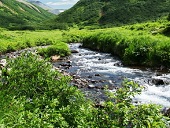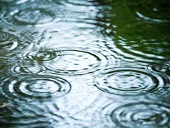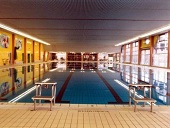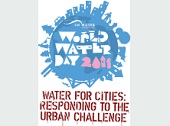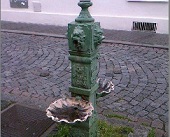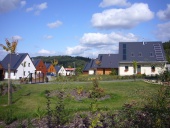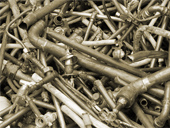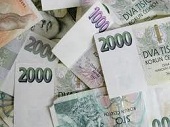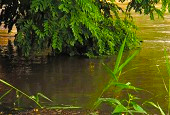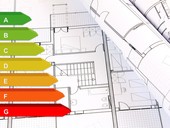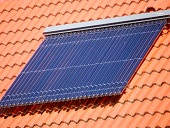Stormwater management is quite a new topic in Slovakia. There is no legal framework as well as standards or guidelines how to apply sustainable stormwater management techniques. As a consequence of repeated floods we are aware of a need for more effective stormwater handling. There are numerous techniques and approaches known around the world how to support sustainable stormwater management, especially in the urban areas, where the stormwater can cause significant damages. Nowadays we are more open to implement these new approaches especially in cases, where the effort is sustainability in stormwater management such as protection against floods and mitigation of pollution. The aim is to manage stormwater as close to source as possible which is also called source control covering number of measures. Rainwater harvesting as a part of the source control measures could contribute to the sustainability in stormwater management as well, by supporting potable water conservation and sustainability in water management in general. Submitted theoretical part of the thesis describes comprehensive stormwater management approaches as well as legislative framework.
Archiv článků od 21.6.2010 do 11.4.2011
Current legislation, in particular Decree No. 268/2009 Coll. and Decree No. 269/2009 Coll. prefer to deal primarily draining rainwater infiltration. The technical requirements for infiltration facilities in the Czech Republic are still lacking. ČKAIT issued a technical tool TP 1.20 in 2010 and now comes the new standard.
Sufficiency of drinking water and basic hygiene for all the people of the world till 2015 is one of the development objectives of the millenium. But it seems that it won't be realized. Sufficient availability of drinking water is defined as 20 litres of water per person and day at least. The source must be maximum 1 km away from the place of living.
Low energy (LEB) and passive buildings (PB) are becoming standard for new constructions in EU countries. They aren't experiments anymore, but absolutely ordinary mass production of sophisticated residential buildings. Only in Germany, Austria and Switzerland there are already thousands of buildings that meet the passive standard and their number doubles every year. The cost of passive buildings is only 5-7 % higher than those of conventional ones, and yet, their consumption of energy and heating is up to 90 % lower!
Author raises discussion and proposed changes in the rules of the energy audit. Draws attention to the criteria for evaluating alternatives and to small requirements for variability solutions. Read controversy of the author and reviewer who considers the methodology as sufficient and sees a problem in processing audits.
The directive 2010/31/EU on the Energy Performance of Buildings – called EPB, EPBD II or EPBD Recast – was passed last May. EU member countries are obliged to implement these new requirements into their national legislations. The implementation of 2010/31/EU was addressed by a number of seminars during the recent Aqua-therm 2010 trade fair. The following article presents you with the most important facts from the presentations and with links to information that was published before and during Aqua-Therm 2010.
When setting the pressure loss in piping water mains in buildings should be preferably used the coefficient of local resistance or eq. length increases according to the manufacturer's documentation of piping system. For fittings having an outer diameter greater than the pipeline can continue to use the values of coefficients of local resistance according to ČSN 75 5455.
Waste water pollution consists of dissolved and undissolved substances and thermal pollution, which sewerage operators monitor. Industrial kitchens and similar operations are under the obligation of operating systems to catch all fatty waste. Fatty waste water is connected to a separate branch drainage, which is built to catch the fats and prevent them from ending up in the municipal sewage. To this sewage are connected drains, sinks and kitchen spouts, food dispensers and dish washing (the issue is the connection of dishwashers).
Current trends in living stem from the changes of life style, and in addition to the traditional, technologically healthy, series domestic products there are constantly new collections, technologically superior, ergonomically shaped,and also esthetically ideal products. Present trends are adapted mainly by manufacturers with increasing demand from customers for processing, which includes the material used and the esthetic view of the domestic products including other products such as those for bathrooms. The right choice for tecnologically healthy products for future bathrooms should be based on the basis of the type of bathroom in which these products will be installed, where they will be placed, and what we expect from the bathroom as a whole.
In recent years, we can see with pleasure the developing efforts of government and investors on the use of the rainwater management. Srom the large diversity of the applicable requirements, it is now clear that there is a lack of consistent approach to this problem. Often the entire effort to use the rainwater management will result only to design large retention areas, often situated under the ground. The lack of requirements is in the method of establishing the size of the retention area too. The article compare calculation between the size of the retention area according to one real requirement for a proposed residential area with the calculation according to standards (ČSN 75 6261). The second part deals with the impact of the slowdown on the required size of drain retention area. This effect is demonstrated on the first outcome evaluation of residential area drainage using rainwater management.
A revised version of the directive was issued in 2010 under the title 2010/31/EU. In part, it is a modification of the original. In it, there are have been defined new administrative tools to increase the energy performance of buildings - among others, it includes the concept of "building with almost 0 energy consumption".
The report contains elaboration about make of electrical equipments in the bathroom, in the kitchen and residential as well as non-residential spaces. There are described general charakteristics segmentation of spaces into 3 zones (0,1 and 2). It is including option of equipments into these zones. This report also treat of electrical equipments position in the wash spaces and spaces with massage baths. The report is leaning on present standards with experience context and scientific remarks from different seminars and conferences.
Drainage systems need to be addressed in the first architectural considerations. Many interesting solutions can deal with rain water, but must be prepared in the first proposals for the building and its surroundings. Green roofs, edit terrain, infiltration areas, the building's location in the terrain, etc. may be difficult to solve additionally.
The world trend is saving of water and energy sources. Industrial plants also aim at saving of these sources; however their first stimulus is not to protect water supplies for the next generations. They want to only decrease input costs of their production. If water exhaustion was free or unlimited in industry then only few firms would limit their consumption under the environmental ethics press. Costs would be “reduced” to capital, operational and service expenses of used devices. This argument is too simply. A determining criterion of source use is the quality of consumed water as well as waste water which can be released into a recipient after treatment. If we think about energy sources then we also intend energy efficiency and waste heat. The methods of water treatment are various according to applied principles: physical and chemical. The hydrodynamic resonance physical method of treatment is preferred from point of environmental view as well as chemical methods are more expensive. Creation of limestone is one of main reasons for an application of physical method water treatment.
In the first part of the article is a brief overview of the market of collectors of solar radiation in the Czech Republic, the basic layout of different types of collectors and major part of solar systems. Following parts provide some basic connection of solar systems for various heating load (hot water, heating, swimming pool) and a simplified design absorber area. Each scheme is briefly described its function. In conclusion, it is marked possible connections of storage tanks for different performance.
zpět na aktuální články
